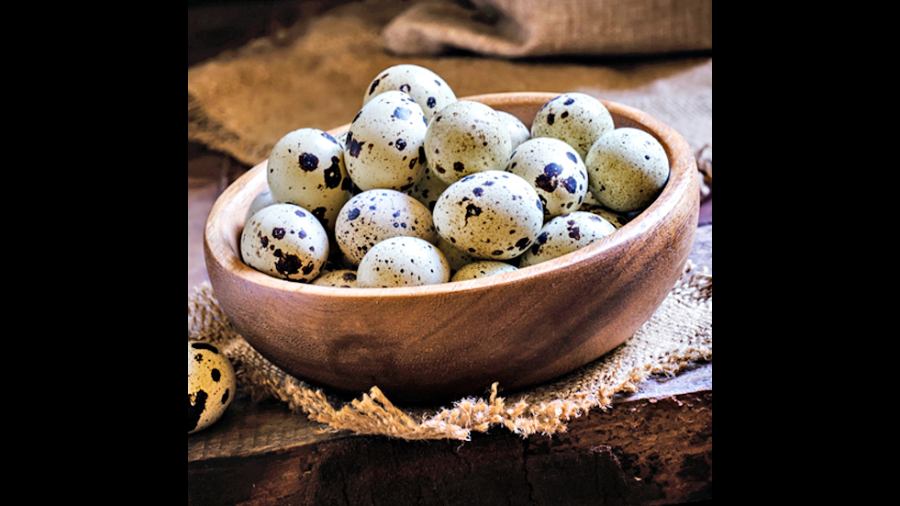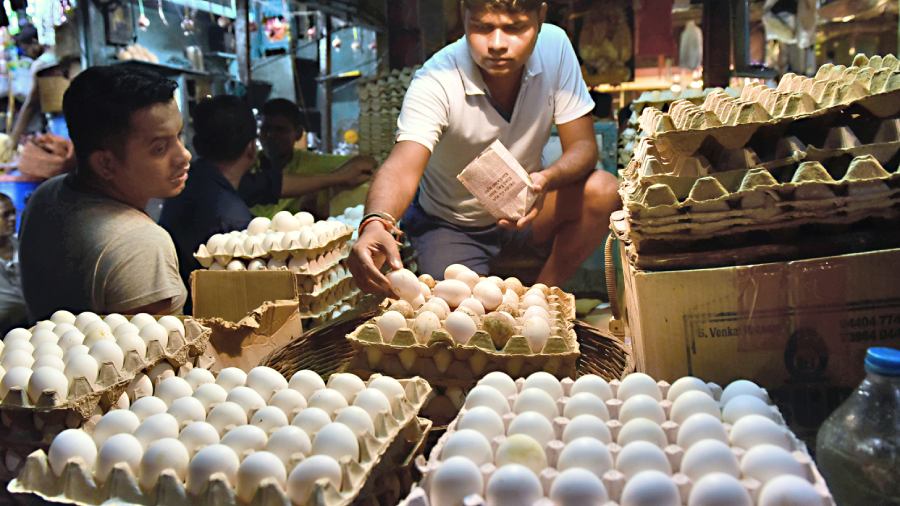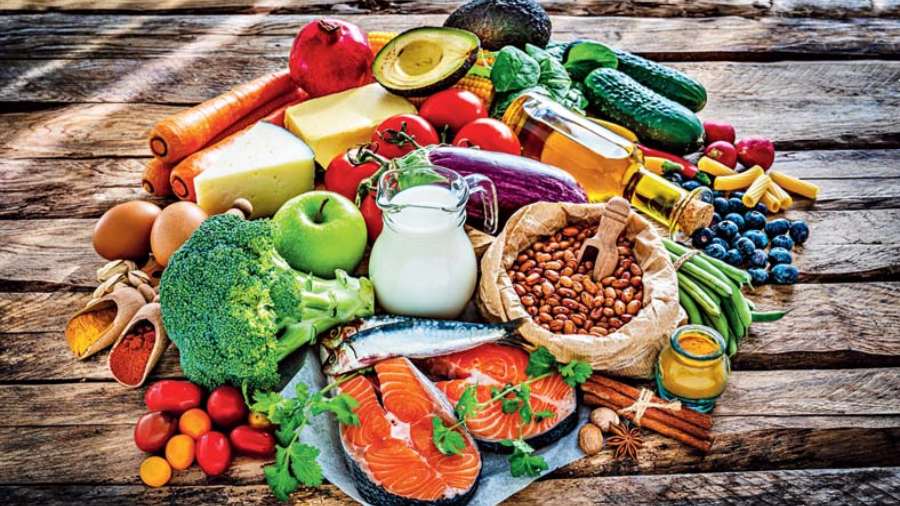Till the early 20th century, hen or chicken eggs were banned from the kitchens of affluent, upper caste Hindu families in Bengal. The chicken and its egg, whichever came first, was firmly the purview of Muslim kitchens those days. Even in the early 1980s, many urban households had kerosene stoves and separate saucepans to cook eggs and chicken outside the kitchen sanctorum.
A hundred years ago, the widely accepted egg curry was made with duck eggs, easily available and halal. Water-rich Bengal nurtured a bevy of ducks — pati hans or the Khaki Campbell, bele hans or the Common Teal, raaj hans or the Peking Duck — and they laid eggs in a variety of colours, greenish, blueish, speckled. And then there were the largish, aptly-named Madrasi eggs that came from down South.
In the early 1960s, the West Bengal government set up the Haringhata farm in Nadia and a poultry and training school in Ashoknagar in North 24-Parganas to make reasonably-priced, nutritious food easily available and the people of Calcutta were introduced to the poultry egg, a superfood rumoured to be a panacea for all ills, from tuberculosis to asthma. As poultry farms became more popular, the poultry egg became the sole type of egg in Bengali kitchens, the duck egg curry gradually turning into a winter’s day treat.
In the last decade, however, there has been a spurt in the variety of eggs on offer.
Poultry eggs
This is still the most popular of the lot but all poultry eggs are not created equal. “Arambagh eggs are by far the best-tasting ones,” says Soma Das, 42, of Dum Dum. Arambagh Hatcheries is a poultry farm in Hooghly that produces both eggs and chicken. Then there are the Shalimar eggs found in Bolpur, which have a bright orangish-yellow yolk. “These eggs are much more nutritious. The colour signals the presence of beta carotene in the yolk,” says Sanghamitra Nandi, 59, who has a second home in Prantik, Bolpur.
Best had: In pancakes and cakes. It provides a richness without overwhelming the taste
Brown eggs
Rumoured to be healthier than whiteshelled eggs, these are actually laid by a breed of hen called the Rhode Island Red. Brown eggs are usually a little expensive — priced at Rs 15 compared to Rs 6 of the poultry egg — simply because they are not as easily available in India.
Best had: Boiled. You’ll want to show off the brown, so serve them unshelled
Country chicken eggs
While the name implies that the eggs come from desi chicken breeds, that is no more the case. You will often spy a brownshelled egg among the off-white ones. They are a legacy of the time when the animal husbandry department gave out Rhode Island Reds to villagers because they are easy to care for. “I collect whatever eggs each household wants to sell in my village and bring them,” says Kajal Bibi, who travels 70 kilometres from a tiny village in Basirhat in North 24-Parganas to sell eggs on Calcutta’s Jessore Road. Country chicken eggs are smaller than poultry eggs, so they are less popular.
“But people who are more aware insist on country chicken eggs,” says Tarun Goldar, who home delivers such eggs. “I don’t know whether they are more nutritious but I know that the eggs are antibiotic-free,” he says. They are also cage-free and free range — meaning the chickens are not kept in cages and are allowed to forage, unlike in poultries — two other labels that ensure a premium on eggs.
Best had: Half-boiled. Smear that semi-set yolk on toast for best results
Duck eggs
The duck eggs Kajal has in stock have a greenish tint but I am looking for ones with a bluish tint. Goldar maintains they are the tastiest. “The breed that lays those eggs was common in the past,” says Kajal but she cannot name it. Goutam Roy, who sells all sorts of eggs at his stall in Nagerbazar in Calcutta, says, “Desi duck eggs are more tasty, possibly because they are fresh, but people still prefer the Madrasi duck eggs because they are larger.” The Madrasi eggs are almost twice the size of a country duck egg and I wonder what breed lays them. “They are in all probability from the Peking Duck, which lays the largest eggs,” says Udaybhanu Roy, co-founder and director of the organic co-operative farm Tona, named after the village in which it is situated in Bhangar in South 24-Parganas.
Best had: In a spicy egg curry with rice
Kadaknath eggs
A creamy or brownish-white egg, it comes from the native black Kadaknath chicken. While the chicken is famed for its colour, the eggs seem to be shunned because of it. “I used to stock Kadaknath eggs but I stopped because there were no takers,” says Samir Ghosh, who has a large chicken-andeggs shop in Nagerbazar. Haringhata supplies Kadaknath eggs as does Tona. “Monsoon is not a good season for eggs,” says Roy, “You will find a larger variety in winter.”
Best had: Scrambled. The albumin has a black tint, some claimed, but a little research showed that up as no more than a rumour

Quail eggs Shutterstock
Quail eggs
These tiny but tasty treats are not as exotic as they sound and quite easily available both online and off, though prices vary widely. These are smaller than chicken eggs but contain more fat, protein, iron, riboflavin and Vitamin B12 by weight. They taste much like chicken eggs and can actually replace them in recipes: three quail eggs to one chicken egg. They will also make the dish richer as their ratio of yolk to white is more than in chicken eggs.
Best had: Fried. Peeling boiled ones is a test of patience
Fish eggs
These were available long before poultry eggs but only with the mother fish. It is only now that you can buy fish roe separately. The queen is hilsa roe, always had deep fried.
Best had: The roe of lesser fish is had in fritters spiced with ginger, onions and chillies. Can also be had scrambled with onions and potatoes but has a very strong fishy odour
Ghorar deem
The horse egg is a treat found not in the Bengali kitchen but the adda. It is a product of riotous imaginations served to the gullible and the unsuspecting. It is relished just as much as a spicy duck curry.
Best had: In small doses












